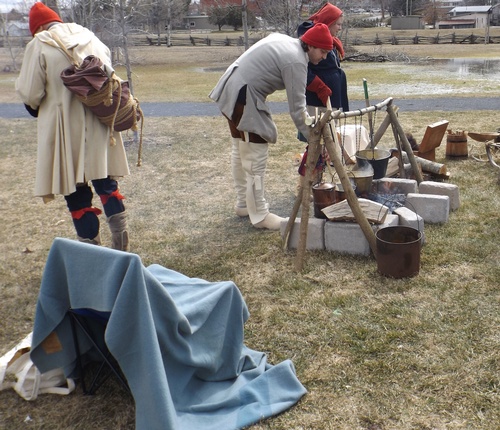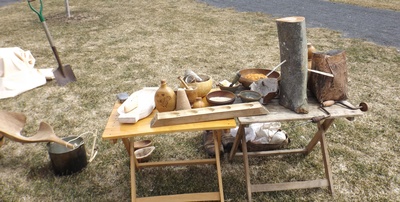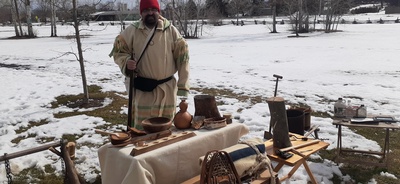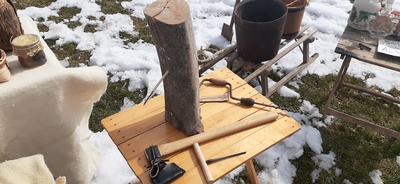Date and Time
Saturday Mar 16, 2024
Location
Van Rensselaer Point
22 Albany Ave.
Ogdensburg, New York
Fees/Admission
The demonstration is free and open to the public.
Website
Contact Information
Admin@Fort1749.org
Send Email

Description
18TH CENTURY MAPLE SUGAR DEMO
By Fort La Presentation Association
Hitch up your sleigh and come down to the Fort de La Presentation site on Van Rensselaer Point and discover the history and importance of maple sugar production in the North Country and witness history happening before your eyes as living historians make maple sugar the 18th century way! This is a popular family event that offers visitors of all ages an opportunity to help in the sugar-making process.
The event will be held Saturday, March 16th, 2024, from noon to 2:30 pm, if the weather permits. A rain date of April 6, 2024 has been chosen.
Van Rensselaer Point is located at 22 Albany Ave. in Ogdensburg, New York. The demonstration is free and open to the public. For further information please visit www.fort1749.org.
As the North Country begins the annual Maple Season, we should look to days gone by and how the production of maple syrup and maple sugar was once achieved. Long before vacuum systems and gas fired boiling pans, the sap was delivered to the sugar houses with horses or oxen.
Refined white cane sugar, as we know it, was the height of luxury in the 18th century. Indeed, sugar did not factor highly into the average French-Canadian diet, as sugar consumption in New France was less than 2 pounds per person per year. Compare that to the nearly 152 pounds of sugar the average American consumes in that time today!
When Europeans made first contact with the Indigenous people of North America in the 17th century, they discovered that maple sugar was common in their diet. Native people all over the Northeast North America territory had been boiling and freezing maple sap to refine it into syrup and sugar since time immemorial. Maple Sugar was an important part of gift giving ceremonies which strengthened political and economic ties between many Indigenous nations and provided quick energy for warriors and travelers making their way through the waterways of the St. Lawrence River Valley.
In the early spring a majority of the over 2,000 Iroquois people living in and around Fort de la Présentation would have been employed in boiling pure maple sap into the sugar that they would use for the rest of the year.
French Canadian people soon learned how to make maple sugar from their Native neighbors. After 1760 when New France became a part of Britain maple sugar production remained an integral part of the early spring season and continues today as a vital part of our unique identity in the North Country.
Images





